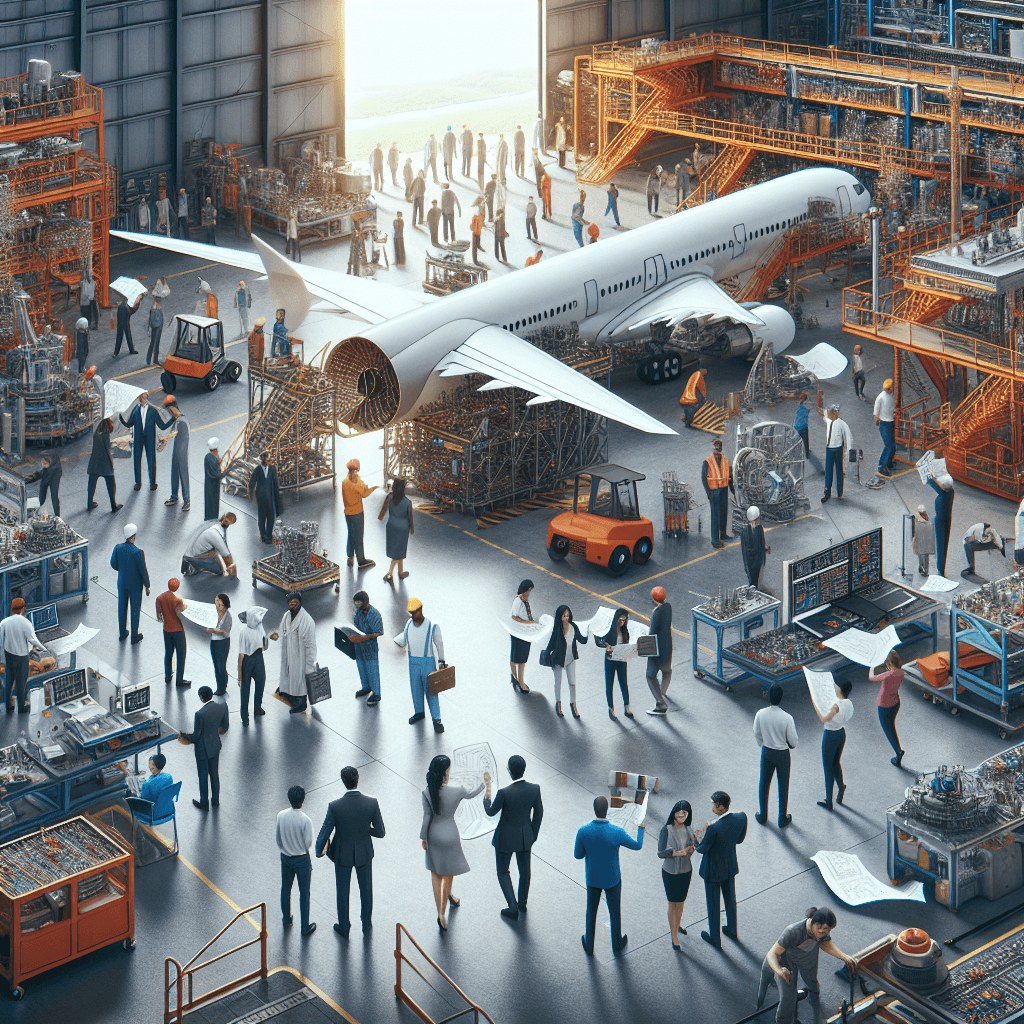Introduction
Have you ever gazed up at an airplane soaring overhead and wondered about the incredible journey it took to get there? From the first sketch on a drafting board to the final assembly line, the process of building an airplane is as fascinating as it is complex. Understanding how airplanes are built sheds light on the innovation, engineering, and craftsmanship that go into creating these amazing machines. In this article, we will take you on an immersive behind-the-scenes journey through the airplane manufacturing process. Whether you’re an aviation enthusiast, a budding engineer, or simply curious, this exploration will provide you with valuable insights into the intricate world of aircraft production.
The Design Phase: A Blueprint for Flight
Conceptualization and Design
The path to an airplane’s creation begins long before any physical assembly takes place. Engineers and designers collaborate to conceptualize aircraft. This process includes market research, aerodynamic studies, and material selection. Powerful computer-aided design (CAD) software assists in creating detailed 3D models, allowing designers to visualize concepts and simulate performance.
Prototyping
Once the designs are finalized, a prototype is built. This initial model is crucial for testing and identifying potential design flaws. Engineers rigorously evaluate the prototype, conducting wind tunnel tests and structural analyses to ensure the design meets safety and performance standards.
Materials Matter: The Building Blocks of Airplanes
Lightweight and Durable Materials
Modern airplanes rely on a combination of materials designed to enhance performance and safety. The predominant materials include aluminum, titanium, and composite materials such as carbon fiber. Each material brings unique properties to the aircraft: aluminum is lightweight and strong, titanium offers exceptional strength-to-weight ratios, and composites provide increased resistance to corrosion and fatigue.
Sourcing and Testing Materials
Before construction begins, materials must be rigorously tested for quality and durability. Suppliers provide certified materials, and each batch undergoes inspections to ensure it meets the rigorous standards of the aerospace industry.
The Assembly Line: Where Dreams Take Shape
Organized Chaos
The assembly process of an aircraft resembles a well-orchestrated symphony. As components arrive from various suppliers, an efficient assembly line brings these parts together. Major sections of the airplane—the fuselage, wings, and tail—are constructed separately before being joined. This modular approach ensures that each section meets strict quality checks before integration.
Technology in Production
Automation plays a pivotal role in modern airplane manufacturing. Robotic arms assist with tasks ranging from riveting to painting, allowing for increased precision and efficiency. Advanced technology, including 3D printing, is also used for creating complex parts that were once impossible to produce.
Quality Control: Ensuring Safety in Every Flight
Rigorous Testing Procedures
Once assembly is complete, the aircraft undergoes exhaustive testing. This includes ground tests, where engineers check the plane’s systems and components for functionality, as well as flight tests in controlled conditions. Each test phase is meticulously documented, and only after passing all tests is the aircraft cleared for delivery.
Certification and Regulation
Before entering commercial service, every new aircraft must obtain certification from aviation regulatory bodies, such as the Federal Aviation Administration (FAA) in the U.S. This rigorous process ensures that the aircraft meets all safety and performance standards.
FAQs
Q1: How long does it take to build an airplane?
A: Depending on the model, it can take several months to a few years to design and construct a commercial aircraft.
Q2: What are the most commonly used materials in airplane manufacturing?
A: Aluminum, titanium, and composite materials like carbon fiber are primarily used due to their strength and lightweight properties.
Q3: How are safety standards maintained in airplane construction?
A: Safety standards are maintained through rigorous testing, quality control measures, and regulatory certifications required before an aircraft can enter service.
Q4: Are there environmentally friendly practices in airplane manufacturing?
A: Yes, many manufacturers are increasingly adopting sustainable practices, such as recycling materials and reducing waste and emissions during production.
Conclusion
The marvel of modern aviation is not just in the soaring heights of aircraft; it lies in the intricate dance of engineering, material science, and quality assurance that takes place on the ground. Understanding how airplanes are built provides an appreciation for the innovation and commitment required to bring such complex machines to life. As you ponder your next flight, consider the journey of your aircraft and the meticulous craftsmanship behind its construction. If you found this exploration enlightening, share your thoughts or questions in the comments, and delve deeper into related topics about aviation and aerospace engineering. Safe travels!










